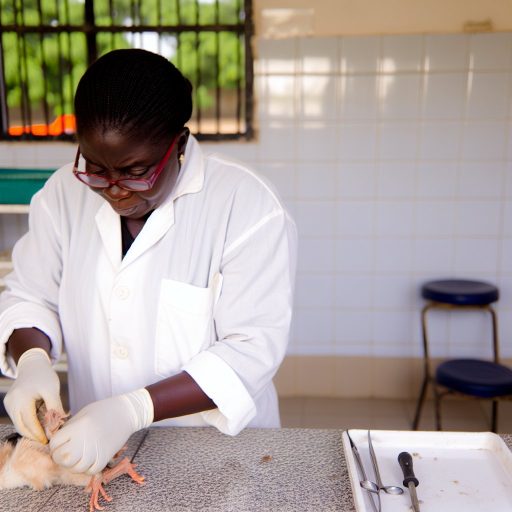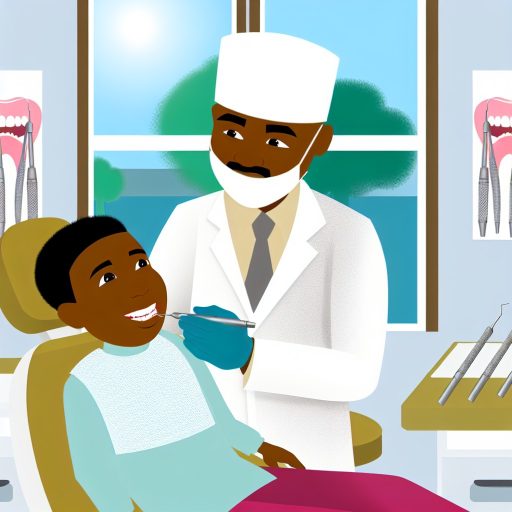Introduction:
Optometry education in Nigeria involves a rigorous training program for individuals aspiring to become optometrists.
Optometry plays a critical role in healthcare by providing specialized eye care services.
The cost of pursuing optometry education in Nigeria can vary depending on the institution and resources available.
Optometry education in Nigeria has a rich history.
It has evolved over the years to meet the growing demand for eye care professionals in the country.
There are various types of optometry programs available.
Each program has its unique focus and curriculum.
Accreditation and regulation play a crucial role in ensuring the quality of optometry education in Nigeria.
History of Optometry Education in Nigeria
- Optometry education in Nigeria dates back to the early 20th century when the first optometry school was established.
- Initially, optometry education was limited to a few institutions.
- Over the years, more schools have been established to meet the growing demand for optometrists in the country.
- The curriculum has evolved to incorporate modern practices and technologies.
- This ensures that students are well-prepared to meet the challenges of the profession.
Types of Optometry Programs Available
- In Nigeria, there are various types of optometry programs available, including undergraduate and postgraduate programs.
- Undergraduate programs typically last for five years.
- They cover a wide range of topics, including anatomy, physiology, optics, and clinical practice.
- Postgraduate programs are available for those who wish to specialize in a particular area of optometry.
- Areas of specialization include contact lenses or low vision.
Accreditation and Regulation of Optometry Programs in Nigeria
- Accreditation is essential for ensuring that optometry programs meet the required standards of education and training.
- The Optometry Council of Nigeria (OCN) is responsible for accrediting and regulating optometry programs in the country.
- OCN works closely with university authorities.
- They monitor the quality of optometry education to ensure students receive the necessary training to become competent optometrists.
Optometry education in Nigeria has come a long way.
It continues to evolve to meet the changing needs of the healthcare industry.
With the support of accreditation bodies and regulatory agencies, optometry programs in the country are well-positioned.
They can produce highly skilled and competent optometrists.
These professionals will provide quality eye care services to the Nigerian population.
Tuition Fees and Other Costs:
When considering pursuing a career in optometry in Nigeria, it is essential to understand the breakdown of tuition fees and other associated costs.
Here, we will delve into the specifics to give you a clear picture of what to expect.
Breakdown of Tuition Fees for Optometry Programs:
Optometry programs in Nigeria typically have varying tuition fees depending on the institution and whether it is a public or private university.
On average, tuition fees for optometry programs range from ₦500,000 to ₦1,000,000 per academic session.
Public universities tend to have lower tuition fees compared to private universities offering optometry programs.
This is primarily due to government subsidies that help reduce the financial burden on students pursuing healthcare-related degrees.
It’s worth noting that tuition fees may also vary based on the level of study (undergraduate or postgraduate) and the specific curriculum offered by the institution.
Be sure to research and compare different universities to find the best fit for your budget.
Additional Costs:
In addition to tuition fees, aspiring optometry students should also consider other costs associated with their education.
These include textbooks, clinical materials, and equipment necessary for hands-on training and practical experience.
Textbooks are an essential part of any optometry program, providing students with the necessary theoretical knowledge to succeed in their courses.
Depending on the university and curriculum, textbooks can cost anywhere from ₦50,000 to ₦100,000 per academic session.
Clinical materials and equipment, such as ophthalmoscopes, retinoscopes, and trial frame sets, are integral to the practical aspect of optometry education.
These items can range from ₦100,000 to ₦200,000 or more, depending on the quality and brand.
Comparison of Costs Between Public and Private Institutions:
As mentioned earlier, public institutions offering optometry programs generally have lower tuition fees compared to private universities.
However, when factoring in additional costs such as textbooks and equipment, the overall expenses may even out between the two types of institutions.
Public universities may offer subsidized clinical materials and equipment, helping to offset some of the financial burden on students.
On the other hand, private universities may provide more advanced and specialized equipment, but at a higher cost to students.
Ultimately, the decision between attending a public or private institution for optometry education should not solely be based on cost.
Consider factors such as program accreditation, faculty expertise, and available resources to ensure you receive a quality education that prepares you for a successful career in optometry.
By understanding the breakdown of tuition fees and other costs associated with optometry education in Nigeria, you can make an informed decision on where to pursue your academic and professional goals.
Find Out More: Top Rehabilitation Hospitals and Clinics Nigeria
Scholarships and Financial Aid:
Securing financial aid for optometry education in Nigeria can be a daunting task for many students.
However, there are various scholarships and grants available to help alleviate the cost burden of pursuing a degree in this field.
Availability of Scholarships and Grants:
Numerous organizations and institutions offer scholarships specifically designed for optometry students in Nigeria.
These scholarships are often merit-based, focusing on academic achievements, leadership qualities, and community involvement.
Application Process for Scholarships and Financial Aid:
The application process for scholarships and financial aid varies depending on the organization or agency offering the funding.
Transform Your Career with Expert Guidance
Get personalized mentorship consulting that’s tailored to your unique path. Our expert advice is actionable and exclusive.
Get StartedStudents are typically required to submit transcripts, letters of recommendation, and personal statements demonstrating their commitment to pursuing a career in optometry.
Organizations and Government Agencies Offering Financial Assistance:
Some of the organizations and government agencies in Nigeria that provide financial assistance for optometry education include the Nigerian Optometric Association (NOA), the Tertiary Education Trust Fund (TETFund), and individual state governments.
While the cost of optometry education in Nigeria can be significant, there are opportunities for students to offset these expenses through scholarships and financial aid.
By exploring these options and diligently applying for funding, aspiring optometrists can pursue their academic and professional goals without being overly burdened by financial constraints.
- Availability of scholarships and grants for optometry students
- Application process for scholarships and financial aid
- Organizations and government agencies offering financial assistance for optometry education
You Might Also Like: Dental Therapy vs. Dentistry: Key Differences
Challenges Faced by Optometry Students:
- Financial constraints for students from low-income backgrounds.
- Lack of access to specialized equipment and resources.
- Impact of high tuition fees on student dropout rates.
Optometry education in Nigeria, like in many other countries, presents several challenges to students pursuing this field.
These challenges can significantly impact the learning experience and outcome for students, limiting their full potential in the profession.
Financial Constraints for Students from Low-Income Backgrounds:
One of the primary challenges faced by optometry students in Nigeria is financial constraints, especially for those from low-income backgrounds.
The cost of education, including tuition fees, textbooks, and other related expenses, can be a significant burden for students who may not have the financial means to support their education.
Many students struggle to afford the high cost of optometry programs, leading to stress, anxiety, and potential dropouts.
This financial barrier can hinder students from fully focusing on their studies and excelling in their academic pursuits.
Lack of Access to Specialized Equipment and Resources:
Another challenge faced by optometry students in Nigeria is the lack of access to specialized equipment and resources necessary for their practical training.
Optometry is a field that requires hands-on experience with advanced equipment to develop the necessary skills and competencies.
Without access to these specialized tools, students may find it challenging to gain practical experience and apply theoretical knowledge in real-world settings.
This lack of access to essential resources can hamper the quality of education and training received by optometry students.
Impact of High Tuition Fees on Student Dropout Rates:
The high cost of tuition fees in optometry programs can also have a significant impact on student dropout rates.
Many students may be unable to continue their education due to the financial burden of paying for their studies.
As a result, the dropout rates in optometry programs may increase, leading to a loss of potential talent and professionals in the field.
This high dropout rate not only affects the students individually but also has implications for the healthcare system, as fewer optometrists may graduate to meet the rising demand for eye care services.
The challenges faced by optometry students in Nigeria, including financial constraints, lack of access to specialized equipment, and high tuition fees, can have detrimental effects on their education and training.
It is essential for educational institutions, policymakers, and stakeholders to address these challenges and create a supportive environment for optometry students to succeed in their academic and professional endeavors.
Discover More: Best Hospitals for Maxillofacial Surgery in Nigeria

Strategies to Reduce Costs:
Optometry education in Nigeria can be expensive.
However, there are several strategies that students can employ to reduce costs.
This approach can make their education more affordable.
Importance of Budgeting and Financial Planning:
One of the most crucial strategies for reducing the cost of optometry education is proper budgeting.
Students should create a detailed budget that outlines their expenses and income.
This helps them manage their finances effectively.
By tracking their spending, students can identify areas where they can cut costs.
Saving money could include reducing unnecessary expenses like eating out or shopping.
Additionally, students should explore financial aid options such as scholarships and grants.
These can help cover the cost of tuition and other educational expenses.
By being proactive in seeking financial assistance, students can lessen the financial burden of optometry education.
Part-time Employment Opportunities for Students:
Another effective strategy for reducing the cost of optometry education is to seek part-time employment.
Students can work part-time jobs during their studies to earn extra income.
This income can cover educational expenses.
Part-time jobs provide financial support and valuable work experience.
This experience can enhance students’ resumes and skills.
Students can explore opportunities in optometry offices, clinics, or retail stores.
However, students should balance their work commitments with their academic responsibilities.
Managing time effectively is essential for those who choose to work while studying.
Advocacy for Affordable Optometry Education in Nigeria:
Advocacy plays a crucial role in promoting affordable optometry education in Nigeria.
Students can join advocacy groups or professional associations to push for change.
Working together with stakeholders can influence policy decisions affecting education costs.
Such advocacy efforts can lead to reforms making education more accessible and affordable.
Furthermore, students can participate in community outreach programs or fundraising events.
These efforts can help raise funds for scholarships or financial assistance programs.
By actively advocating for affordable education, students contribute to making optometry education more sustainable.
Learn More: Nigeria’s Medical Genetics Field: How It’s Changing Patient Care in 2024
Future Outlook for Optometry Education:
In looking ahead at the future of optometry education in Nigeria, there are several key aspects that need to be considered to ensure that it remains accessible and affordable for aspiring optometrists.
This section will delve into potential changes in tuition fees and costs, government initiatives, and the role of stakeholders.
Potential changes in tuition fees and costs:
As the cost of education continues to rise globally, there is a possibility that tuition fees for optometry programs in Nigeria may also increase.
This could pose a significant barrier for students from low-income backgrounds who aspire to pursue a career in optometry.
Institutions offering optometry programs will need to carefully consider the impact of any fee changes on student enrollment and accessibility.
Government initiatives to make optometry education more accessible:
The Nigerian government plays a crucial role in supporting education initiatives, including optometry programs.
To ensure that optometry education remains accessible, the government may need to explore options such as providing scholarships, grants, or subsidies for students pursuing optometry degrees.
Additionally, collaborating with universities and professional organizations to develop financial aid programs could help offset the rising costs of education.
Role of stakeholders in ensuring affordable education for aspiring optometrists:
Stakeholders such as universities, professional organizations, and industry partners also have a responsibility to support affordable education for aspiring optometrists.
Universities can work to streamline their operations and reduce costs without compromising the quality of education.
Professional organizations can advocate for policies that support affordable education and provide resources for students in need.
Industry partners can offer financial support, internship opportunities, or sponsorships to help offset the financial burden of education.
The future outlook for optometry education in Nigeria hinges on the collaborative efforts of various stakeholders.
By addressing potential changes in tuition fees and costs, implementing government initiatives to make education more accessible, and mobilizing the support of stakeholders, the goal of ensuring affordable education for aspiring optometrists can be achieved.
It is essential for all parties involved to prioritize accessibility and affordability to cultivate a diverse and skilled workforce of optometrists in Nigeria.
Implications of High Education Costs for Aspiring Optometrists
Summarizing the key points discussed in the outline, it is evident that the cost of optometry education in Nigeria poses a significant barrier to aspiring optometrists.
The financial burden placed on students hinders their ability to pursue this critical healthcare profession.
Therefore, there is a pressing need for policymakers, educational institutions, and organizations to address these cost barriers.
By developing strategies to make optometry education more affordable, we can ensure a steady supply of skilled and qualified optometrists for the Nigerian healthcare system.
It is imperative for all stakeholders to collaborate and prioritize the importance of affordable education in producing competent optometrists.
Investing in the education of future optometry professionals is crucial for the overall improvement of eye care services in Nigeria.
Additional Resources
Awareness and Utilization of Welders’ Personal Protective Eye …
The Lancet Global Health Commission on Global Eye Health: vision …




